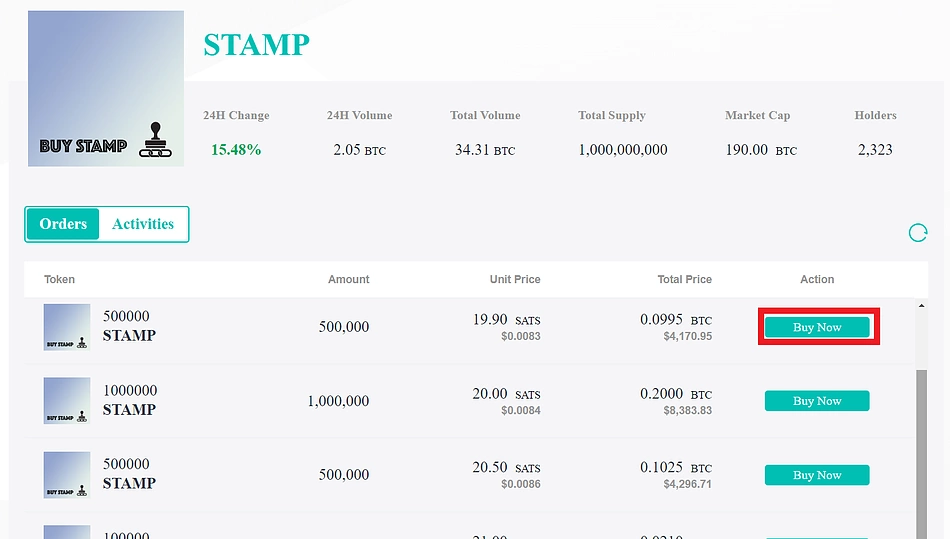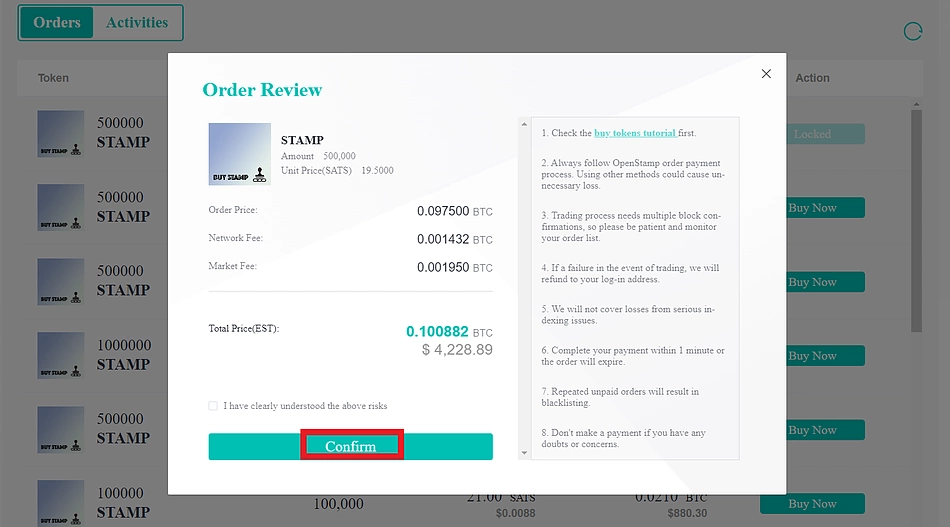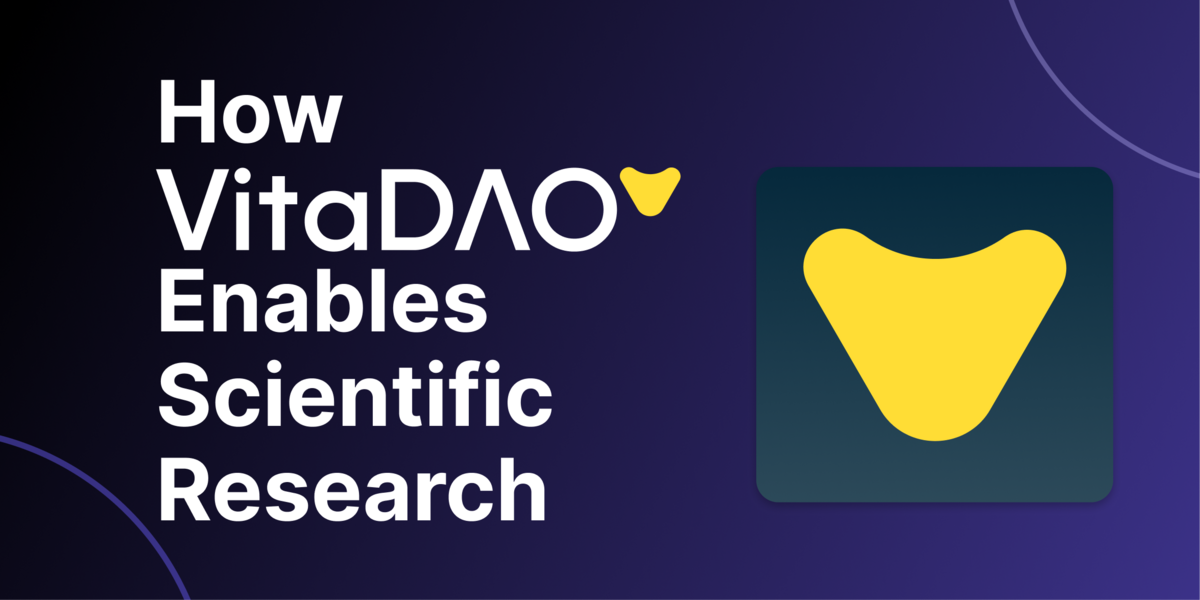What Are SRC-20 Tokens?
SRC-20 tokens are tokens on the Bitcoin blockchain. They store data using UTXO, which ensures permanent Bitcoin storage that cannot be pruned.
Key Takeaways
-
The SRC-20 token standard is used to issue fungible tokens on the Bitcoin blockchain by attaching data to Bitcoin. The SRC-20 standard is likened to the ERC-20 standard on the Ethereum blockchain and even closer to the BRC-20 token standard on the Bitcoin blockchain.
-
Bitcoin ordinals and Bitcoin Stamps are associated with BRC-20 and SRC-20 tokens respectively. Both technologies allow expanded use cases for the Bitcoin network although they share a few differences in how they work.
-
Bitcoin Stamps technology works by inscribing data on UTXO Bitcoin, developers leverage this to create tokens according to the SRC-20 and SRC-721 (Stamps) standards.
-
This article discusses the Bitcoin STAMPS protocol and SRC-20 token standard, how they work, what it means for the Bitcoin blockchain, and how they compare to similar token standards and technologies.

According to data obtained from Stampscan, an SRC-20 token tracker, the cumulative market cap of SRC-20 tokens is in excess of $100 million at the time of writing. About 60% of this figure is contributed by STAMP and KEVIN, two of the earliest SRC-20 tokens.
For ease of reference, within this article, we will use SRC-20 to refer to tokens created using Bitcoin Stamps, and Stamps to refer to Stamp mints containing images and video (or NFTs).
The Bitcoin Stamps technology and SRC-20 tokens are extending possibilities on the Bitcoin blockchain. We take a look at what they really are;
Understanding SRC-20 Tokens
In short, SRC-20 tokens are tokens on the Bitcoin blockchain. However, they are not exactly like the relatively more popular ERC-20 tokens. The SRC-20 token standard is powered by Bitcoin Stamps, which were originally conceived as a way to mint permanent Bitcoin NFTs. Stamps store data using UTXO (Unspent Transaction Output), which ensures permanent blockchain storage that can’t be pruned.
Stamps are data inscriptions on the Bitcoin blockchain that enable the creation of tokens that can be spent like any other crypto asset. SRC-20 tokens run parallel with the native Bitcoin coin on the Bitcoin network and fees for transactions involving SRC-20 tokens are paid in Bitcoin. Essentially, the SRC-20 token standard’s basic operation is similar to that of BRC-20 tokens, although they store data on the Bitcoin blockchain in different ways.
Here’s how SRC-20 tokens are created.
How Are SRC-20 Tokens and Stamps Created?
As Bitcoin Stamps were originally designed to create permanent Bitcoin NFTs, Bitcoin Stamps transforms images to the Base64 format. The Base64 format allows the images to be presented as a string of characters. The strings are added to a Bitcoin transaction as part of the transaction description and broadcasted to the network.
The good news is that with the rise in popularity of Stamps, users can easily mint Bitcoin Stamps on platforms like Stampverse, Rarestamp, and Assetic, where users only need to upload the image and connect a supported wallet.

Creating fungible SRC-20 tokens originally required Counterparty (broadcasting SRC-20 transaction), however, according to the protocol’s creator, anyone creating a STAMP can now interact directly with the Bitcoin blockchain.
As of block-height 796,000, SRC-20 tokens stopped using Counterparty numeric assets and, instead, utilize the blockchain in a more direct manner.
— Mike In Space (@mikeinspace) July 8, 2023
By removing Counterparty headers in conjunction with new compression techniques, SRC-20s are now smaller in bytes and cheaper to use. pic.twitter.com/H8A4X9xDfd
To create an SRC-20 token, the JSON for the token is first deployed and then minted on the blockchain. The code for each of these procedures differs and conveys information about the desired action.
Here’s how the deployment code for a STAMP looks like;
"p": "src-20",
"op": "deploy",
"tick": "Token name",
"max": "100000",
"lim": "100",
"dec": "18" // [optional]
After the deployment, the STAMP can now be minted. The minting process broadcasts the transaction to the network and registers the STAMP on the Bitcoin blockchain;
The minting code looks like this;
"p": "src-20",
"op": "mint",
"tick": "STAMP",
"amt": "100"
Users who are looking to mint and deploy SRC-20 tokens can also easily mint them through platforms like Stampscan.xyz and Open Stamp. To do so, users just have to enter the ticker, total supply, limit per mint, fee rate for deploying the transaction, and the address to hold the SRC-20 deployment stamp.

Information about minted STAMPS can be accessed on Stampchain.io
Now, let’s look at what you can do with your SRC-20 tokens.
What Can SRC-20 Tokens and Stamps Be Used For?
SRC-20 tokens work like any other fungible tokens, and here are some of their uses:
Routine Trading
SRC-20 tokens are currently being traded on marketplaces like Stampscan. SRC-20 token holders can swap their tokens for Bitcoin or place sell and buy orders on Openstamp.io. SRC-20 tokens aren’t listed on any centralized exchange currently; however, once they are listed, they can be traded against other assets on the exchange.
Likewise, users can buy and sell Stamps on marketplaces like RareStamp.
Peer to Peer Transactions
Anyone who owns a Bitcoin wallet that supports SRC-20 tokens and Stamps can send and receive these tokens. SRC-20 tokens can be sent to peers and can potentially be used as a payment solution in the future.
Memorial Inscriptions on the Bitcoin Blockchain
Bitcoin Stamps allows anyone to inscribe data on Bitcoins. Users can mint Stamps with metadata and images that reflect certain personal memories. This stores the event or data permanently on the Bitcoin blockchain and allows easy access to them.
Interacting With Supported Protocols
SRC-20 token holders can interact with exchange applications like OpenStamp currently. Applications like these recognize the technology on which they are built. As Bitcoin Stamps and the SRC-20 standard continue to develop, they could gain applications in decentralized protocols like other exchanges and money markets. SRC-20 holders will be able to use their tokens on these platforms as seen with ERC-20 tokens. Note that such protocols as money markets that support SRC-20 tokens haven’t been developed at this time but could be available in the future.
Impact of SRC-20 tokens
The Bitcoin community has shown interest in SRC-20 tokens and the Bitcoin Stamps technology. Amongst other inscription technologies that have emerged since BRC-20 tokens, SRC-20 tokens have garnered more interest. According to Stampscan, over 4,000 people hold the STAMP token while over 1,800 investors hold the KEVIN token. Both tokens are the most popular SRC-20 tokens at the time of writing.
SRC-20 tokens have already reached a cumulative market cap of almost $100 million with the actively traded STAMP having a daily trading volume of over $30K. At time of writing, over 260,000 STAMPS have already been minted at the time of writing, according to Stampchain.io. This is presumably a show of interest by the community; however, other factors such as ease of creation and the urge to jump onboard a new trend might have contributed to these figures.
On technological grounds, SRC-20 tokens are having a similar impact on the Bitcoin blockchain as BRC-20 tokens and ordinals. On one hand, the Bitcoin community is exploring more use cases for the blockchain through SRC-20 and Stamps. On the other hand, it has also contributed to some user experiences issues on the network and a section of the community argues that it is extra to the needs of the network and the network congestion is a significant turnoff.
The SRC-20 community and developers are advancing their technology and hope to gain even more interest with time. The impact they have on the Bitcoin community and the whole space in the future will depend largely on their success from these potential developments.
How to Buy SRC-20 Tokens
SRC-20 tokens aren’t listed on any centralized exchanges at the time of writing, but they can be traded on decentralized exchanges that support the Bitcoin STAMPS protocol. Openstamp.io and Stampscan offer SRC-20 trading services. You will also need a Bitcoin wallet that supports the protocol like the Leather wallet (FKA Hiro wallet), Unisat, and Freewallet.
Here’s how to buy SRC-20 tokens:
-
If you have yet to install an SRC-20 wallet, download a desired wallet (Leather Wallet, Unisat, and Freewallet are known to support SRC-20), install it, and set up your account.
-
Visit an SRC-20 exchange. We will use Openstamp.io and Leather Wallet for this tutorial
-
On the platform, Click Connect from the top right corner, and select your wallet provider.

-
On the asset page, you can see current listings. Click on the SRC-20 token you wish to purchase.

-
On your desired order, click the Buy Now on the right.

-
Verify the order details, check the risk affirmation box, and click Confirm to complete.

Note that you must have enough BTC in your wallet to make the purchase.
When the transaction is confirmed on the Bitcoin blockchain, your purchased asset will be sent to your Bitcoin wallet.
The procedure is similar for other Bitcoin Stamps and SRC-20 marketplaces.
Bitcoin Stamps Vs Bitcoin Ordinals
Here’s how Bitcoin Stamps work; it embeds data on UTXOs (Unspent Transaction Outputs). UTXO is the asset left after a transaction, like the balance (change) you receive after paying for a coffee. That is, assuming you have 1 BTC and you send 0.4 BTC to a friend, your UTXO is 0.6 BTC. Bitcoin Stamps creates tokens and NFTs on the Bitcoin blockchain by attaching data to this extra Bitcoin. Consequently, the STAMP is ‘destroyed’ when the wallet spends the unspent bitcoin. Destroyed here means that the asset no longer exists within the UTXO set, however, it will continue to live in the transaction data of the blockchain held by all full nodes.
On the other hand, Bitcoin ordinals attach data to ordinals. Ordinals are a numbering system for satoshis. An asset creator can trace a specific Satoshi and attach data in the form of a JSON or multimedia to them.
Bitcoin STAMP and Bitcoin ordinals are the two most popular inscription technologies on the Bitcoin blockchain. Both of them attach data to bitcoins to enable the creation of extra assets on the network. But they differ in the way they do this; here are the major differences between both protocols.
Data Pruning
Bitcoin Stamps stores data directly on the Bitcoin blockchain on UTXOs. These bitcoins are unspent and are therefore not subject to witness modification at the point of execution. In contrast, Bitcoin ordinal details are stored in the witness data and can be modified by a syncing node. Bitcoin STAMPS data cannot be pruned. Assets minted using this protocol are eternally preserved and immutable. Bitcoin ordinals’ data can be pruned by nodes by removing old witness data. Note again that STAMPs are not ‘destroyed’ when the UTXO set attached to the asset is spent.
Data Size
The data storage for Bitcoin Stamps is flexible. The recommended image resolution for data encoding is 24 by 24 pixels, but the creator has the freedom to attach images of higher resolution. This increases the data size proportionally and could result in higher fees for transactions involving the Stamp. For Bitcoin ordinals, the data size must not exceed the Bitcoin block size (4 MB). Creators are limited in the image resolution and overall data size, but this regulated data size ensures a standard transaction cost.
Signature Type
Bitcoin Stamps claims an inherent multi-signatory structure. This applies to Stamps broadcasted through Counterparty or directly on the Bitcoin blockchain, meanwhile, Bitcoin ordinals adopt a single-signatory system.
|
|
Bitcoin Stamps |
Bitcoin Ordinals |
|
How they store data |
Attaches data to UTXOs. |
Attaches data to Satoshis. |
|
Data pruning |
Data is stored in UTXOs and cannot be pruned. |
Data is stored in witness data and can be pruned. |
|
Data size |
Data size is flexible, can vary depending on the attached data. |
Data size limit is set. |
|
Signature type |
Multi-sig |
Single-sig |
SRC-20 VS BRC-20 tokens
The SRC-20 token standard utilizes the same technology as Bitcoin Stamps, while BRC-20 tokens are powered by Bitcoin ordinals. Both tokens are quite similar in the way they operate. They are fungible, run on the Bitcoin blockchain, and are both supported by inscription technologies. However, they share a significant difference due to their underlying technologies.
Here are some notable differences between SRC-20 and BRC-20 tokens;
Minting Data Format
Only the SVG, PNG, and GIF image formats are allowed when creating SRC-20 or SRC-721 tokens. A wider range of file types and data formats is accepted for creating BRC-20 tokens. Creators can provide files in the SVG, HTML, PNG, and GIF formats. Generally, audio, texts, and videos can be attached while minting SRC-20 tokens.
Transaction Cost
Due to the larger data size for SRC-20 transactions, fees for such transactions are significantly higher, this is because of the data format and the need to pay extra fees to store larger images. In contrast, BRC-20 transactions are strict on the image format and data size, users are unable to store larger images and the data size remains unchanged, also, the SegWit discount for BRC-20 tokens makes the tractions even cheaper. Additionally, BRC-20 token transaction data is stored in the witness section of the transaction and not necessarily node, this contributes to the cheaper transaction cost.
Adoption, Wallet, and Protocol Integration
BRC-20 tokens have gained wider traction, compared to SRC-20 tokens. Many Bitcoin wallets and protocols are developing technologies to embrace the growing BRC-20 market. Centralized exchanges like Binance and Kucoin have listed BRC-20 tokens. AI-powered protocols like DexCheck are developing special trackers and bots for BRC-20 tokens. This is not the same for SRC-20 tokens. Some Bitcoin wallets are yet to develop support for SRC-20 tokens and only a few decentralized protocols support SRC-20 tokens. Centralized exchanges are yet to list any SRC-20 tokens as well. This could, however, change in the future.
|
|
SRC-20 |
BRC-20 |
|
Supported data format |
SVG, GIF, PNG only. |
HTML, texts, images, audio, videos, SVG. |
|
Transaction cost |
Fees are higher due to data and increases with the data. |
Lower data size attracts lower fees. SegWit discount lessens fees. |
|
Adoption and integration |
Currently supported by fewer protocols and platforms. |
Supported by several platforms, protocols and exchanges. |
Final Thoughts
The initial purpose of the Bitcoin blockchain is regular peer-to-peer transactions. Technologies like the ones pioneered by Bitcoin Stamps and ordinals allow the creation of even more use cases for one of the oldest blockchains. However, these add more load to the network, leading to critics focusing on the congestion of the Bitcoin network.
That said, these models could also be modified in the future to not only function smoothly on the network but also complement the role of the Bitcoin blockchain as a facility for the transfer of value. SRC-20 tokens boast an advantage over BRC-20 tokens, thanks to the UTXO model and the resulting immutability of the Bitcoin STAMPS protocol. However, both systems are rather complementary and could be regarded as early prototypes at this stage.
On average, both technologies look promising and it will be interesting to watch their progression. However, they are still in their early stages and are highly speculative, so always do your own research around technology and any tokens you are looking to invest in. SRC-20 tokens mentioned in this article are only to serve as a reference point and should not be taken as an endorsement.
Correction: An earlier version of this article misattributed STAMP as the first SRC-20 token. The first SRC-20 token is KEVIN.

Joel is deeply interested in the technologies behind cryptocurrencies and blockchain networks. In his over 7 years of involvement in the space, he helps startups build a stronger internet presence through written content. Follow the author on Twitter @agboifesinachi









 Or check it out in the app stores
Or check it out in the app stores